17 Fascinating Facts about Mohenjodaro and Indus Valley, a Civilisation Far Ahead of its Time
Indus Valley Civilization is as fascinating as it is mysterious and these mind-boggling facts just prove it !

In the late 1820s, a British explorer in India named Charles Masson stumbled across some mysterious ruins and brick mounds, the first evidence of the lost city of Harappa. Thirty years later, in 1856, railway engineers found more bricks, which were carted off before continuing the railway construction. In the 1920s, archaeologists finally began to excavate and uncover the sites of Harappa and Mohenjodaro. The long-forgotten Indus Valley civilization had, at last, been discovered.
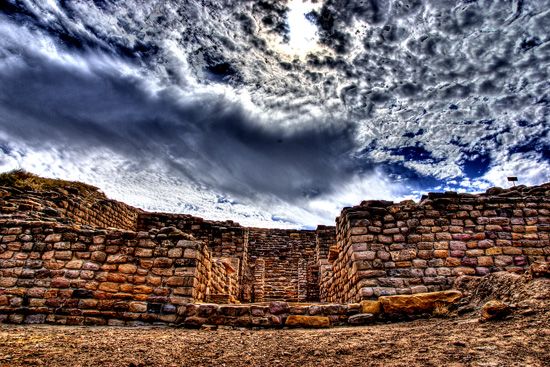
Photo Source
Thousand of years ago, the Indus Valley civilization was larger than the ancient civilizations of Egypt and Mesopotamia combined. Many of its sprawling cities were located on the banks of rivers that still flow through Pakistan and India today. Here are a few mind-boggling facts about this civilization.
1. Oldest in the World
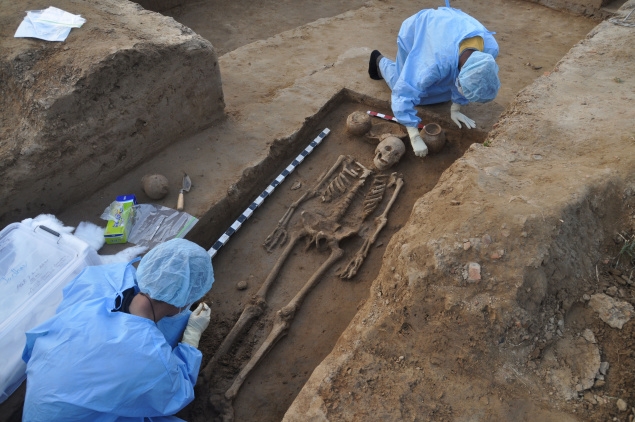
Photo Source
Scientists from IIT-Kharagpur and Archaeological Survey of India (ASI) have recently uncovered evidence that the Indus Valley civilization is at least 8,000 years old and not 5,500 years old as earlier believed. This discovery, published in the prestigious Nature journal on May 25, 2016, makes it not just older than the Egyptian and Mesopotamian civilisations but also the oldest in the world!
2. Mohenjodaro and its Great Bath

Photo Source
Mohenjodaro translates to the ‘Hill of the Dead’ or the ‘Mound of the Dead’ in Sindhi. The Great Bath of Mohenjodaro, a watertight pool perched on top of a mound of dirt, is enclosed within walls of baked bricks. This bathing pool (and another one at Dholavira) suggests that Harappans valued cleanliness. There are even small changing rooms surrounding the Great Bath, with an attached bath area in each room!
3. An Undeciphered Script
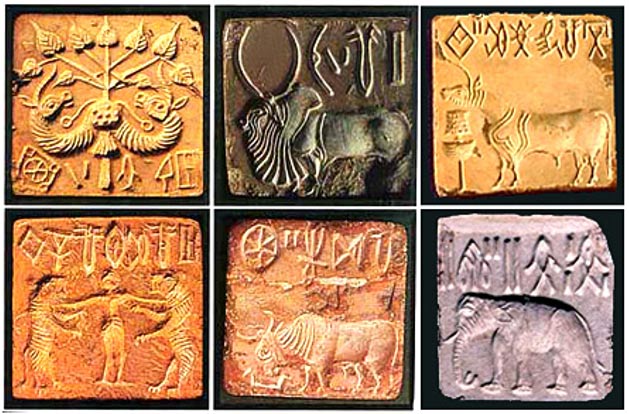
Photo Story
The most intriguing of all undeciphered scripts in the world, the Indus script is made up of partially pictographic signs and various human and animal motifs that include a puzzling ‘unicorn’. These have been found inscribed on miniature steatite seals, terracotta tablets and occasionally on metal. Linguistic experts and scientists have been trying to decipher this challenging script for decades as it could hold the key to the secrets of this mysterious culture.
4. Great Granaries Of Harappa
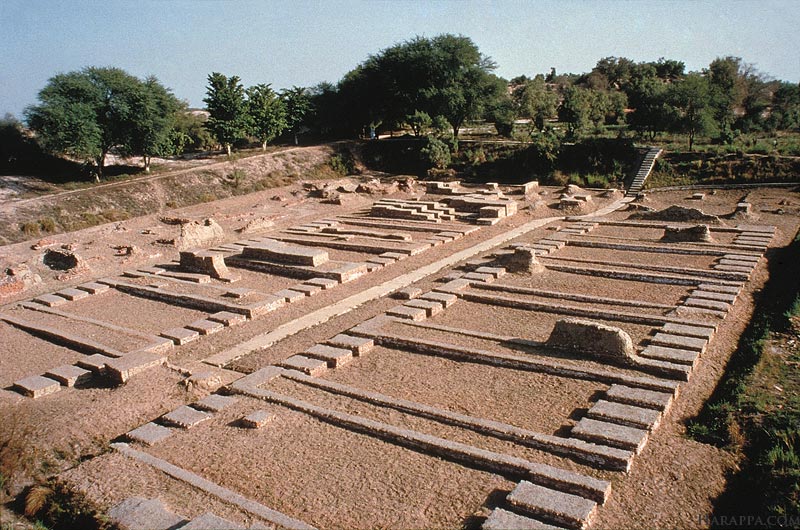
Photo Source
Evidence of several granaries, massive buildings with solid brick foundations and sockets for wooden superstructures, have been found in excavations of Harappa, Mohenjodaro, and Rakhigarhi. All the granaries were built close to the river bank so that with the help of boats, grains could be easily transported. The Great Granary at Harappa also had a series of working platforms with circular bricks nearby that were probably used for threshing grain.
5. World’s Earliest Known Dockyard at Lothal
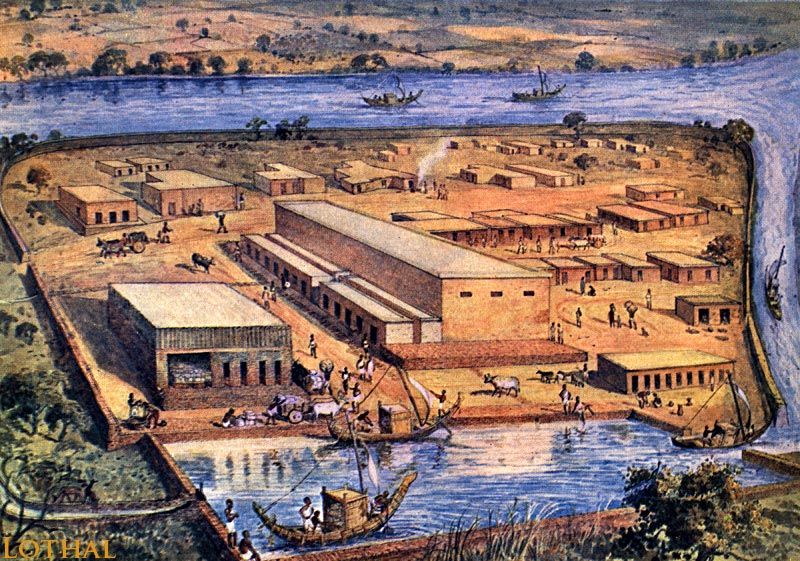
Photo Story
A vital and thriving trade centre of Indus Valley civilization, Lothal had the world’s earliest known dockyard. Spanning an area 37 meters from east to west and nearly 22 meters from north to south, the dock connected the city to an ancient course of the Sabarmati river, which was the trade route between Harappan cities in Sindh and the Saurashtra peninsula. In those days, the surrounding Kutch desert of today was a part of the Arabian Sea.
6. Fire Altars of Kalibangan

Photo Source
Kalibangan, which literally means black bangles, lies along the left bank of the dried-up bed of river Ghaggar in Rajasthan. Other than giving the evidence of the earliest ploughed agricultural field ever revealed through an excavation, Kalibangan also has several fire altars, which suggest that the Harappans believed in the ritualistic worship of fire.
7. A Game Like Chess
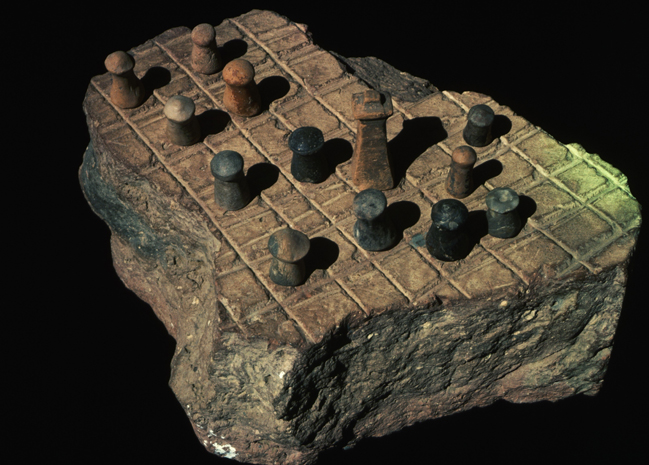
Photo Source
Evidence suggests that the people of Indus Valley Civilization loved games and toys. Flat stones with engraved grid markings and playing pieces have been found, which shows that the Indus people may have played an early form of chess. Dice cubes with six sides and spots have also been found by archaeologists, which suggest that they may have invented the dice too.
8. Town Planning
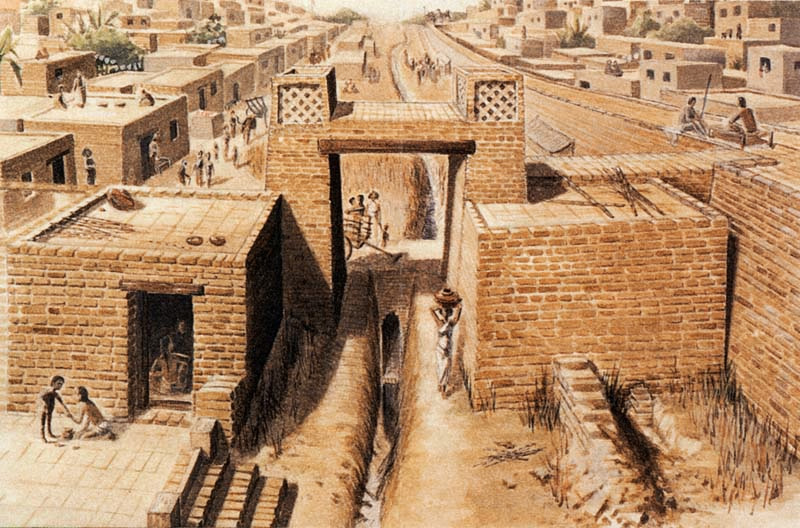
Photo Story
A well-planned street grid and an elaborate drainage system hint that the occupants of the ancient Indus civilization cities were skilled urban planners who gave importance to the management of water. Wells have also been found throughout the city, and nearly every house contains a clearly demarked bathing area and a covered drainage system.
You may also like: Experience Medieval Bathing Rituals at This Ancient Hammam, Bhopal’s 300-Year-Old Turkish Bath
9. Urban Life
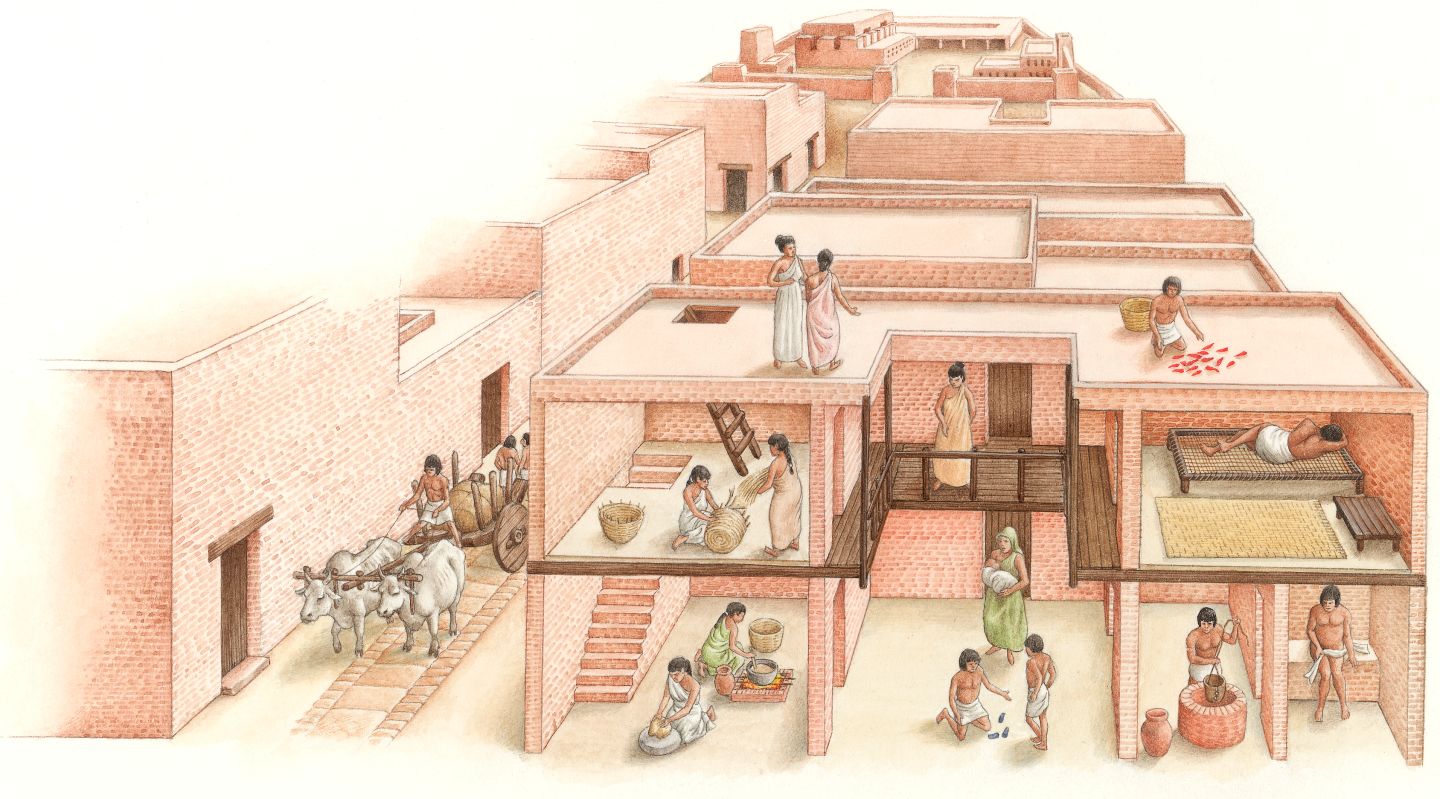
Photo Story
The city’s prosperity and stature are evident in the artefacts, like beads, jewellery, and pottery recovered from almost every house, as well as the baked-brick city structures themselves. Not everyone was rich but even the poor probably got enough to eat. The cities lack ostentatious buildings like palaces and temples, and there is no obvious central seat of government or evidence of a ruler. Also, the lack of many weapons shows that the Indus people had few enemies and that they preferred to live in peace.
10. A Love of Fashion
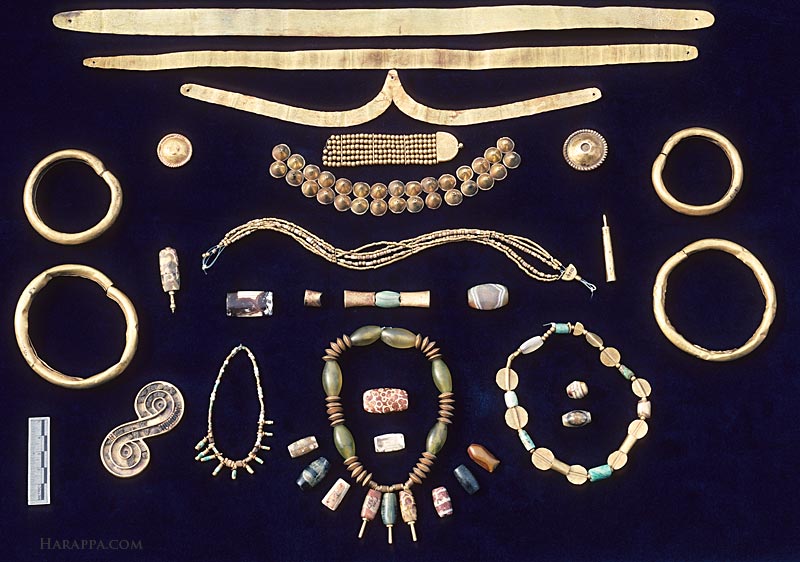
Photo Source
The most commonly found artefact in the Indus Valley civilization is jewellery. Both men and women adorned themselves with a large variety of ornaments produced from every conceivable material ranging from precious metals and gemstones to bone and baked clay. Excavated dyeing facilities indicate that cotton was probably dyed in a variety of colours (although there is only one surviving fragment of coloured cloth). Use of cinnabar, vermillion and collyrium as cosmetics was also known to them.
11. Intriguing Figurines

Photo Source
Terracotta, steatite and metal figurines of girls in dancing poses show the presence of some dance form as well as skilled craftsmanship. The most interesting and famous figurines recovered from Indus Valley excavations are the bronze Dancing Girl, the steatite Bearded Priest King and the terracotta Wheel Cart.
Also Read: 9 Famous Indian Monuments and Structures You May Not Know Were Built by Women
12. Trade Without Money
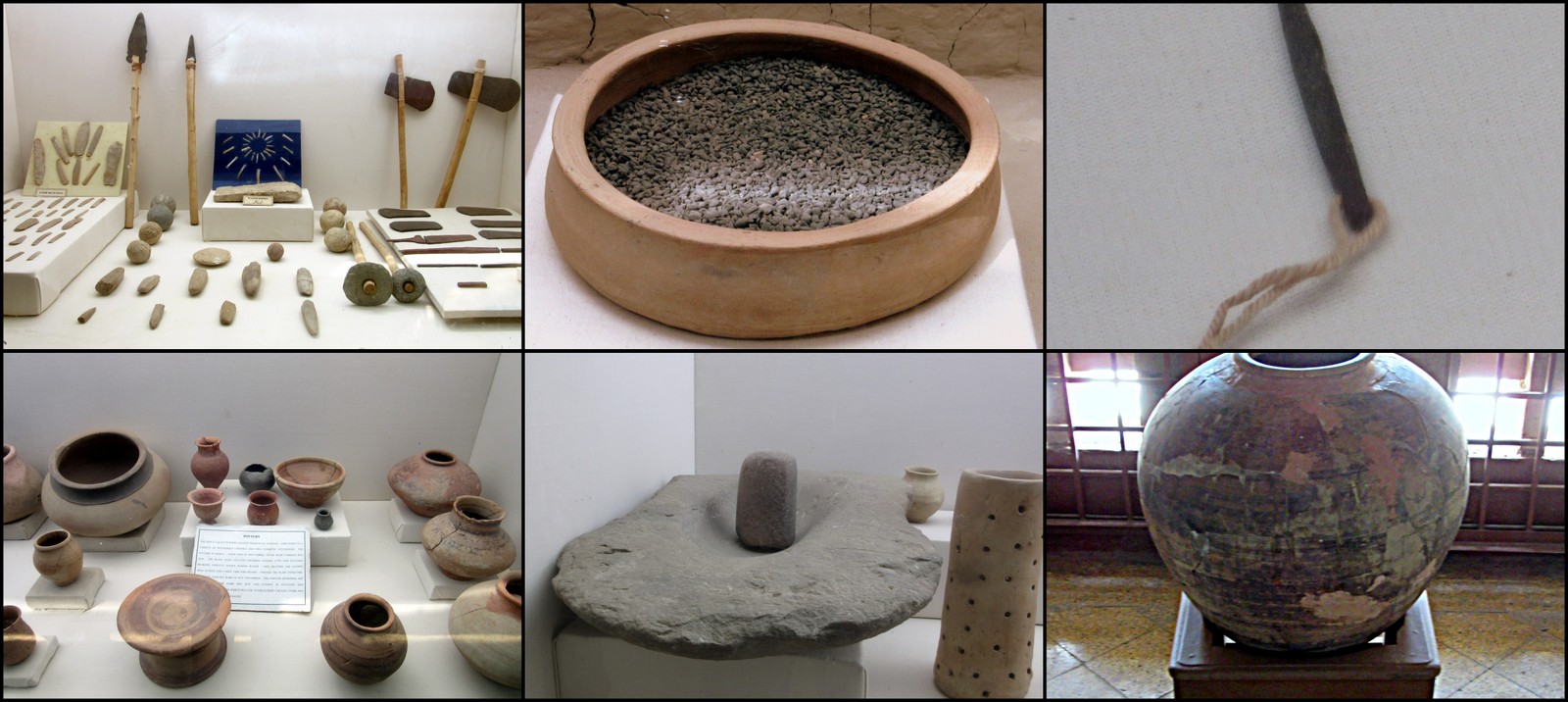
Photo Source
The seals and weights recovered from the ruins of several Harappan cities suggest a system of tightly controlled trade. Trade through barter (not money) was very important for the Indus civilization and their main trading partner was Mesopotamia. There is evidence that people in Mesopotamian cities like Ur owned distinctively Harappan luxury goods such as beads, pottery, weapons and tiny carved bones.
13. The Seal of Pashupati Mahadev

Photo Source
Thousands of engraved seals and amulets have been discovered from Harappan sites, usually made of steatite, agate, chert, copper, faience and terracotta. A famous seal displays a figure seated in a posture reminiscent of the lotus position and surrounded by animals. It depicts a revered deity of the Indus culture, Pashupati Mahadev, who is considered to be the precursor to the Vedic god Shiva.
14. Worship of Mother Goddess
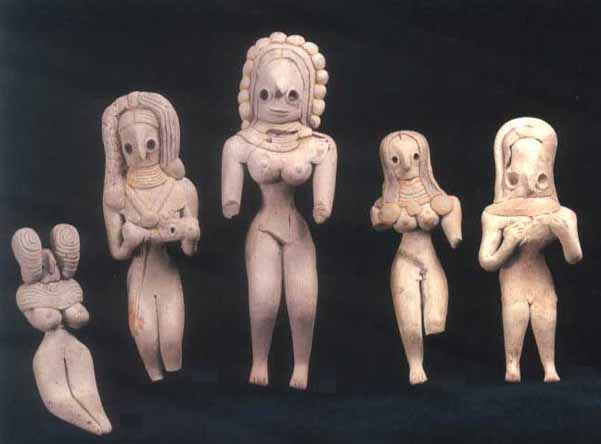
Photo Source
It is widely accepted that the Harappan people worshipped a Mother Goddess, in addition to other fertility and phallic symbols. The recovery of a large number of Mother Goddess figurines, from almost every excavated site, suggests that Mother Goddess worship or the fertility cult was widespread and popular in the civilization.
15. Strange Burials

Photo Source
The evidence of the disposal of the dead at Harappa is quite unique and interesting. Excavations have yielded 57 burials of different types, in which bodies were disposed of in brick-lined rectangular or oval pits cut into the ground along with the grave goods such as jewellery, seals, and pottery. In Ropar, a man was found buried with a dog!
16. Mysterious Massacre of Mohenjodaro

Photo Source
Excavations down to the streets of Mohenjodaro revealed 44 scattered skeletons, sprawled on the streets as if doom had come so suddenly they could not even get to their houses. All the skeletons were flattened to the ground, including a father, a mother and a child who were found still holding hands. Lying in streets in contorted positions, within layers of rubble, ash and debris, archaeologists have concluded that these people all died by violence, but what caused the violence still remains unexplained.
17. Decline and Decay

Photo Source
Archaeologists have long wondered about the sudden decline of the Indus Valley civilization. There is no convincing evidence that any Harappan city was ever burned, severely flooded, besieged by an army, or taken over by force from within. It’s more likely that the cities collapsed after natural disasters or after rivers like Indus and Ghaghra-Hakkar changed their course. This would have hampered the local agricultural economy and the civilization’s importance as a centre of trade.
The continuing excavations and anthropological work have the potential to lend more insight into the disappearance of this enigmatic civilization.
Like this story? Have something to share? Email: [email protected], or join us on Facebook and Twitter (@thebetterindia). To get positive news on WhatsApp, just send ‘Start’ to 090 2900 3600 via WhatsApp.
If you found our stories insightful, informative, or even just enjoyable, we invite you to consider making a voluntary payment to support the work we do at The Better India. Your contribution helps us continue producing quality content that educates, inspires, and drives positive change.
Choose one of the payment options below for your contribution-
By paying for the stories you value, you directly contribute to sustaining our efforts focused on making a difference in the world. Together, let’s ensure that impactful stories continue to be told and shared, enriching lives and communities alike.
Thank you for your support. Here are some frequently asked questions you might find helpful to know why you are contributing?


This story made me
-
97
-
121
-
89
-
167













